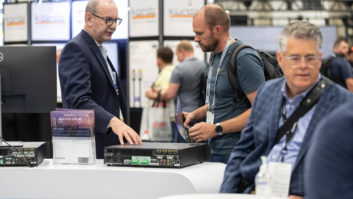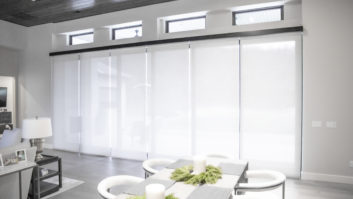In this issue, I will attempt to outline one of the most vital daily communications in our industry: tracking order changes.
For a custom install company, the single hardest thing to deal with, on every level, is the change order. In fact, the term itself strikes fear in the heart of every installer, designer and builder. The reason is that the change order is one of the biggest revenue killers, and sources of customer dissatisfaction, in our industry. If a customer asks you to change, add or delete anything, make sure that you write it down and communicate it verbally to your superiors and peers. I know that you’re thinking that the occasional freebie is no big deal, but in today’s world of tight operational budgets and revenues, any freebie is a big deal.
Let’s use the following scenario, as an example of the importance of documenting even the simplest perceived change order. Two installers had an afternoon block of time open due to a cancellation. They knew they had no other calls for the day. They had just finished up the pre-wire of a new addition at a very affluent client’s residence. The client was on site as they were packing up the truck, and he pulled the guys aside. He asked them if it would be too much trouble to add a couple of things real quickly. Without blinking an eye, they said yes, as these techs get commissions on all “upsales” they make in the field.
The client asked them to run a third coax location into his office, for a dedicated feed to the TV tuner card in his PC.
He also asked them to run an additional audio zone to the garage. Neither of the tasks was too time consuming, taking each tech about an hour. They split duties, one did the garage “add,” one did the office. When the guys finished and called their supervisor, she sent them home a little early.
They went to the bar to watch an afternoon ball game, figuring they had a little hangout time before they were expected home.
Two weeks later was payday. When the guys got their checks, they angrily asked their supervisor where their commissions were for the changes at the customer’s house. She asked them what they were talking about, and they suddenly turned a little white and looked a lot confused. Apparently in their hurry to get to the bar two weeks earlier, neither one of them had filled out the standard paperwork on their system additions or had gotten the customer’s signature. Upon further interrogation of the now thoroughly embarrassed technicians, it was determined that the following was what their “simple little add” actually entailed:
100 feet of RG-6 Coax- $25.00 once terminated at both ends (including the plate)
65 feet of audio/CAT control wire-$16.25
50 feet of 16/2 speaker cable for jumps-$13.00
1 pair of speaker brackets-$40.00
2 single-gang boxes-$3.00
2 hours of labor-$150.00
The actual change tallied only $237.25, but add these facts into the equation of the change: The coax run maxed out the distribution panel, requiring another module ($85). The audio zone maxed out the audio distribution systems, requiring another expansion module, amplifier and LCD keypad ($2,200). The re-engineering, re-design and re-specification of the systems took two hours ($150). The re-programming of the automation system to accommodate the added audio zone took two hours ($190).
The management, billing, collection, administration, etc., of the addition would have taken one hour, had all the proper paperwork been filled out. Instead it took four, with the owner attempting to appease an angry client for three hours ($300). So, the “simple little add” actually cost $3,162.25!
The customer was angry because he had not signed anything and had never been told that the additions would cost so much, or have such an effect on his system.
Luckily, this time there was a happy ending. Although this customer had never been through the change order process with the company (he’d called them when his former integrator couldn’t complete the project satisfactorily) he understood the normal process used to complete a project. He knew about all of the steps normally taken to insure that everything happened smoothly. Once it was admitted to him that the proper steps had not been taken in his case, and that the company would accept half payment on the invoice, he was happy and explained that he didn’t want to have it happen again. Having reached that understanding, he agreed to pay the entire invoice.
The experience inspired the custom installation supervisor to mandate a quick re-training on its policies and reminder of the importance of documentation within the company. After a final, stern “next time I won’t be so generous” lecture, the supervisor submitted the paperwork the field installers were compensated for their up-sale on the next payroll run. Each made $95.
If the guys hadn’t asked about their commissions, several very bad things would have happened.
1) The customer wouldn’t have been charged anything.
2) No one would have known about the change to order the additional parts.
3) The installers would have shown up on site without the right components to complete the job.
4) The company would have discovered that major re-engineering, re-programming and cost would be required, along with a return trip to complete the job.
5) They would have had to tell the customer, who was depending on completion by Christmas, that his project wouldn’t be finished on time or on budget.
6) The company would have been incredibly embarrassed, possibly fired and certainly chewed out.
7) No one would have been paid.
Things like this are happening out there every day. They affect a company on every level. Be sure to document every change order, and if you don’t get some sort of perk for the upsales that often stem from them, by all means, investigate that possibility with your supervisor.
Until next time, keep on pluggin’.






